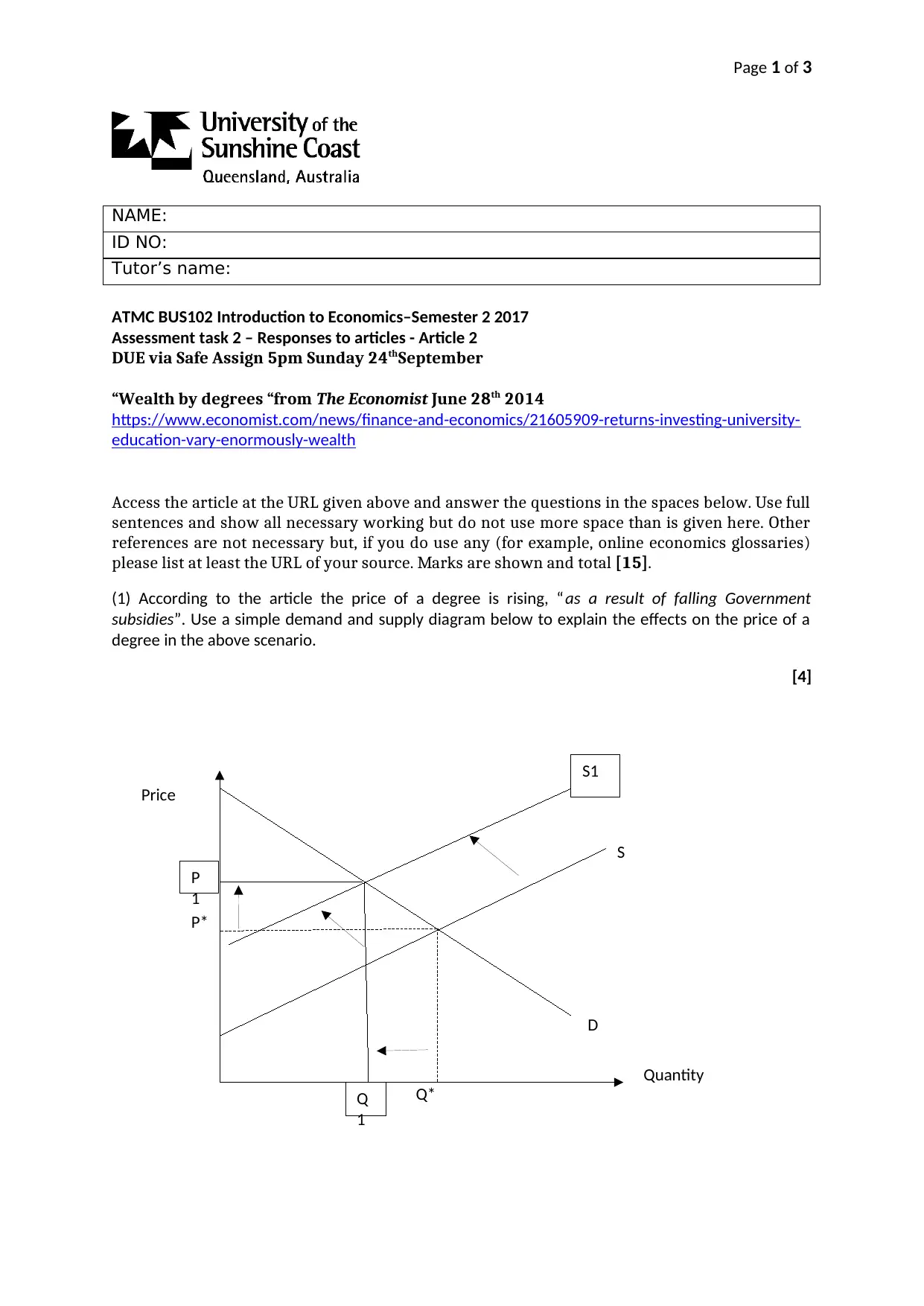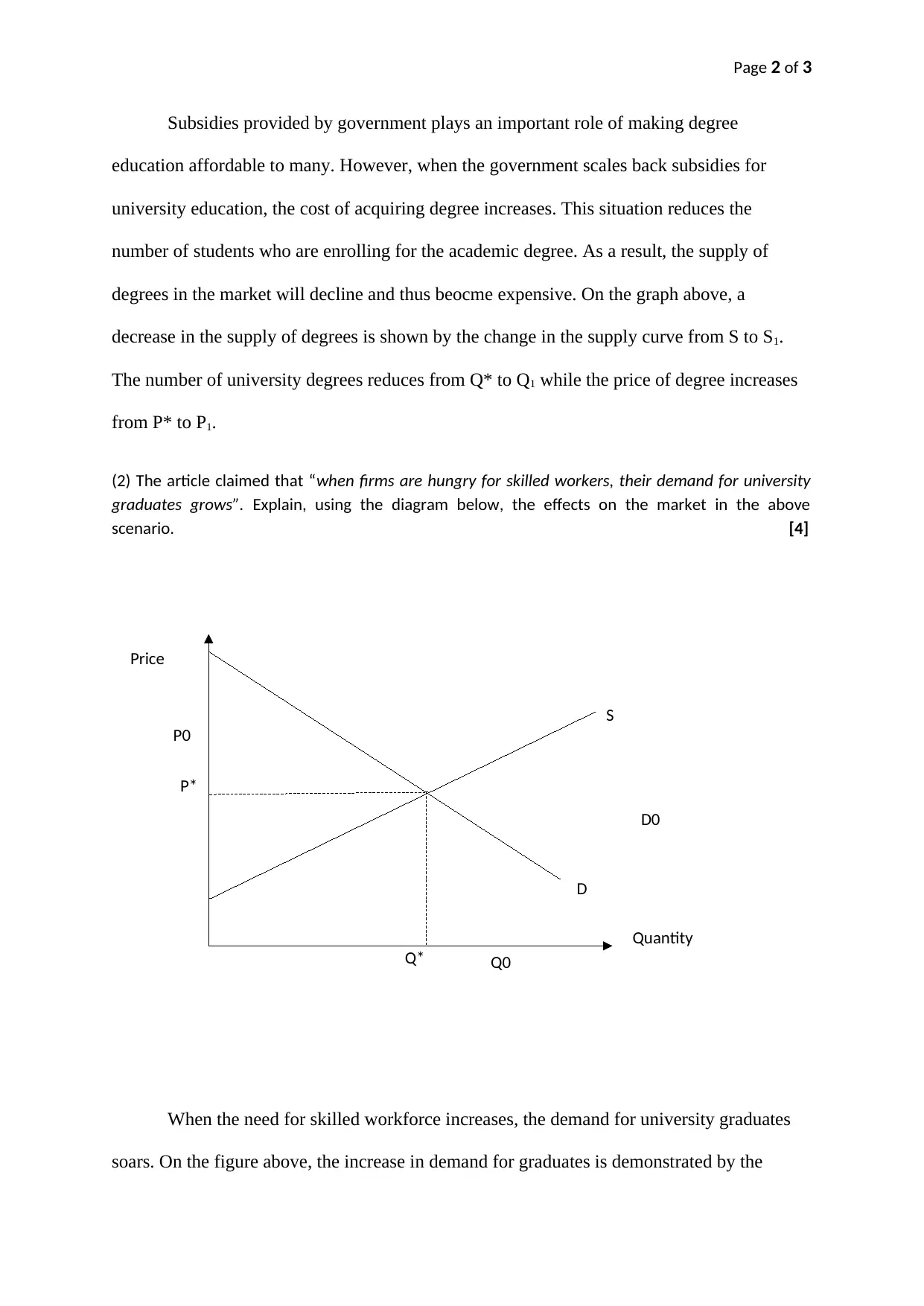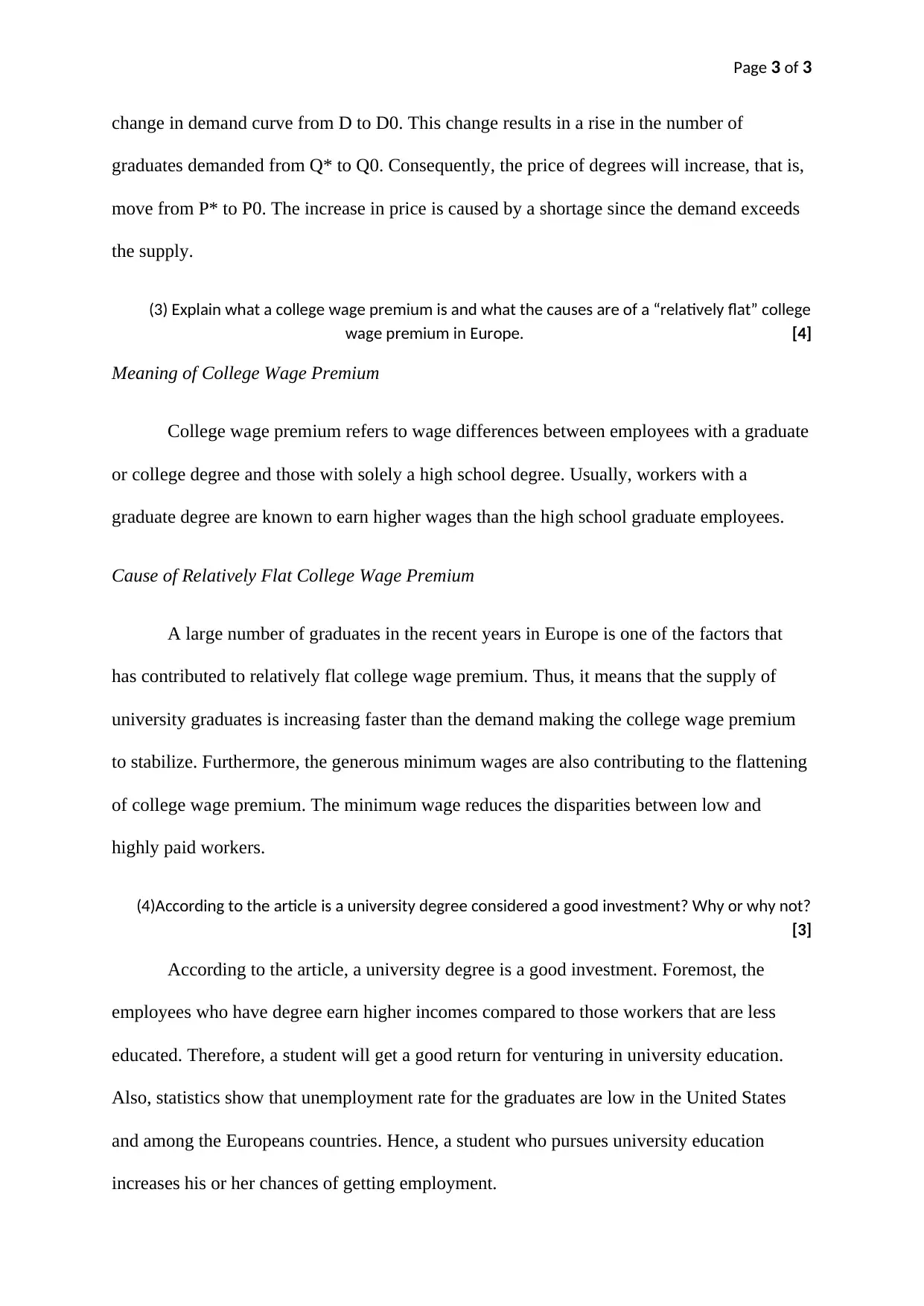ATMC BUS102 Introduction to Economics Assignment: Article Response
VerifiedAdded on 2020/02/19
|3
|721
|114
Homework Assignment
AI Summary
This economics assignment analyzes an article titled "Wealth by Degrees" from The Economist. The student addresses how falling government subsidies affect the price of degrees using a supply and demand diagram, explaining the impact of increased demand for skilled workers on the market for university graduates. The assignment also defines college wage premium and explores the causes of a flat college wage premium in Europe, linking it to the rising supply of graduates and generous minimum wages. Finally, the assignment concludes by assessing whether a university degree is considered a good investment based on the article's insights, highlighting higher earning potential and lower unemployment rates for graduates. The solution uses diagrams and explanations to provide a comprehensive understanding of the economic concepts discussed.
1 out of 3










![[object Object]](/_next/static/media/star-bottom.7253800d.svg)